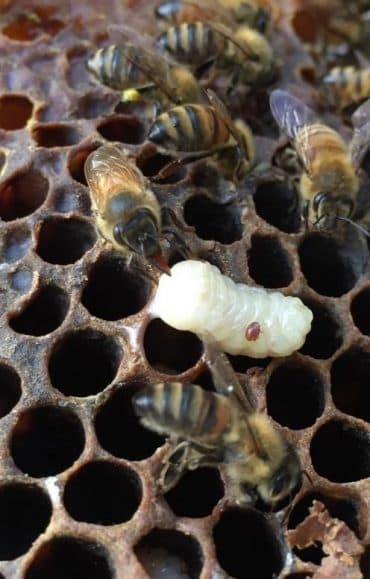Varroa is an external mite that feeds on both brood and adult bees. When it feeds, it spreads viruses. The combined effects of predation and the spread of viruses often results in colony death if nothing is done to prevent mite population growth.
Naturally, Varroa-resistant bee populations have arisen around the globe (and some stock was recently imported to Australia). Many of these populations display uncapping behaviour.
Uncapping occurs when bees partially remove the wax cap from a brood cell. Following this the brood may be removed from the colony, or the cell can be recapped. Opening the cell changes the humidity and temperature within the cell, and can result in the death of immature Varroa mites. This reduces mite population growth.
Bees also use uncapping to control brood diseases such as chalkbrood and European and American foulbrood. Uncapping is thought to be similar to bee’s natural hygienic behaviour and Varroa sensitive hygiene.










